Learning Outside the Book
By Steve Bergman
Published in the Vashon Beachcomber October 12, 2022
When Dana Schuerholz started what evolved into the Vashon Green School (VGS) in 2007, she wanted to provide her daughter Djuna with a place-based, nature-centric education focused on ecological awareness, social and emotional literacy, environmental justice, and stewardship. After visiting the school earlier this month, I found that Dana has created an amazingly effective vehicle for transforming our conventional educational system into a new model much better suited to prepare our youth for the future. Here’s how VGS works.
Partly due to needed COVID-19 adaptations, all classes are held in variously covered outside spaces surrounded by nature. The second story “Lookout” (complete with small desks and blackboards) is above the “Down-Under” workshop for making things, and down the hill is the “Greenhouse/Science Lab” for propagating plants, creating artworks, throwing pots and using the microscope. There are five “Stump Circles” for sitting; and a maze of trails distributed throughout the campus forests. VGS is centered around the Seedbees Farm, with goats, chickens and a variety of fruits and vegetables in a pastoral setting on Westside Highway complete with a perennial stream, and a pond on seven acres of pastures, gardens, and forests. Over the last 14 years, more than 250 students age 5-12 have learned how to take more responsibility for ensuring the sustainability of our planet, as well as engage with nature to develop a sense of purpose and achieve a sense of balance. Dana uses the three fundamental R’s offered by the Dalai Lama to teach sustainability: “Respect for yourself, Respect for others, and Responsibility for your actions.” Dana believes: “when we learn and work and live with those commitments in mind through our choices and behaviors, we create a more sustainable, more just and healthy community and world.”
The VGS program is centered around the seasons. At the beginning of each school year, students select their stump position for the stump circles (instead of a desk), which they will use for the year. This way they can follow how the sun changes its position in the sky due to the Earth’s axial tilt as the seasons change, thus refining their orientation abilities. The curriculum integrates reading, writing, math, science, history, and art into the weekly lessons. Each week starts with a story that drives the integrated lessons for the rest of the week, for example, the “Rebirth of Tilth."
Students start each day at the “Circle of Gratitude," a Core Routine, where they refine their skills to instill care for our island, followed by reciting poems together. Instead of memorizing the US presidents, history is taught through the positive impacts that “Earth Warrior Heroes” have had on our country, such as activist Billy Frank Jr. on sustainable fishing practices. Other Core Routines include: “Chores,” taking care of the farm animals, gardens, forests, compost piles and worm bins; “Sit-Spot,” with quiet mindfulness time; “Silent Wanders,” to heighten their awareness of their environment using all the senses, with an opportunity to record and sketch their observations; and “Singing” one of 60-80 songs related to the weekly theme. Each student has a Nature Field Guide where they record plant and animal observations including habitat, life cycle, prey/predator, and fun facts. They follow how things change during the year and from year to year.
The program is truly hands-on and immersed within our natural world, yet contains elements of conventional schools. Learning specialist Amy Mercer tutors each student twice a week with customized reading and writing lessons. She also works with small groups of older students, recognizing that each learner has unique strengths and developmental paces. One former VGS student recently came back to visit. Dana learned she is now studying Forestry with Prof. Suzanne Simard, leader of the Mother Tree Project at the Univ. British Columbia, using some of the listening to tree skills she initially learned at VGS.
VGS gives students the skills and confidence to go for their dreams while nurturing kindness and understanding. I believe public schools might apply elements of the VGS program to get students out of the classroom and books, and spend more time learning about nature first hand.


